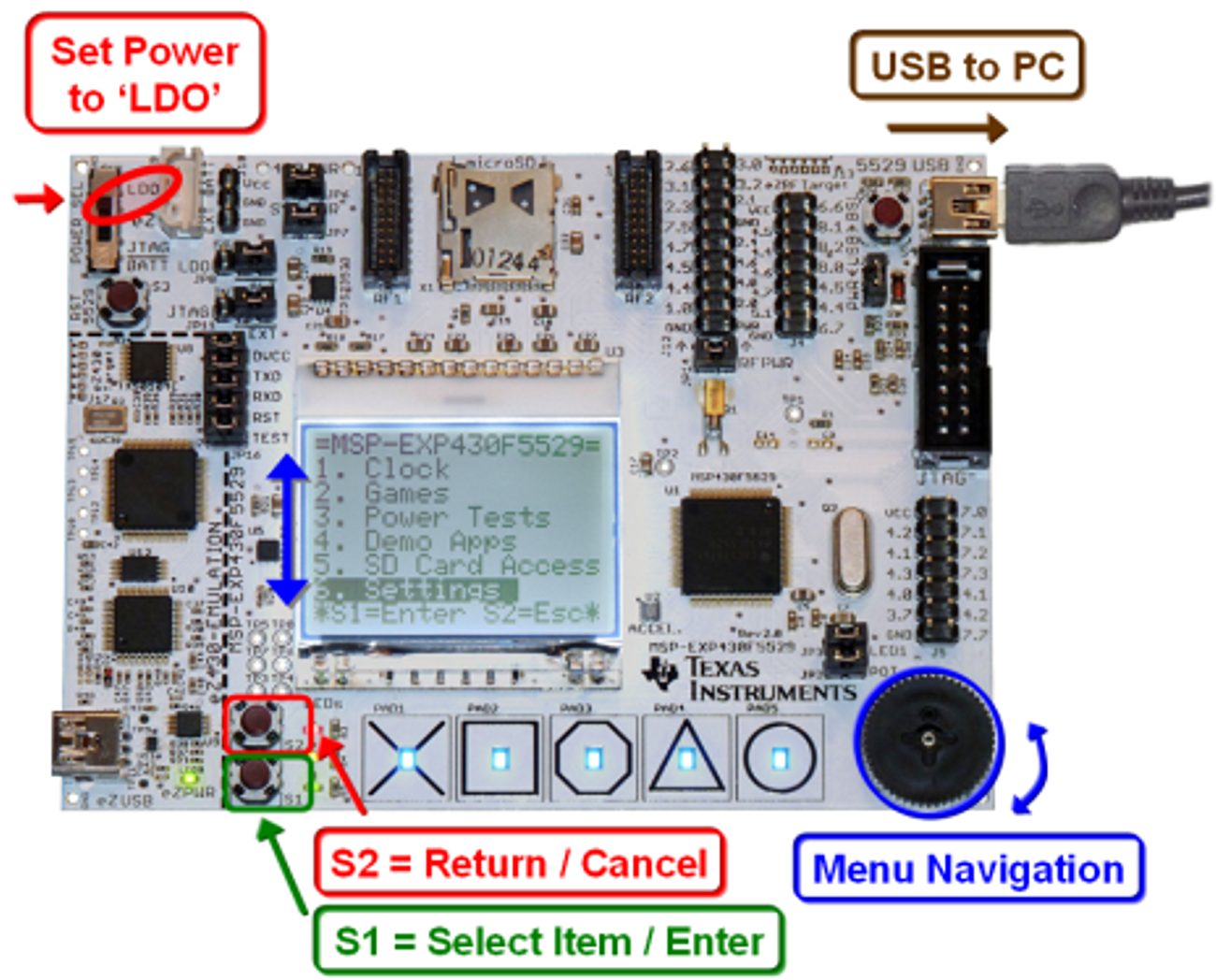SLAU330B May 2011 – April 2017
- Read This First
- MSP-EXP430F5529 Experimenter's Board
- Revision History
2.1 Introduction
The MSP-EXP430F5529 Experimenter's Board arrives with a User Experience application installed to demonstrate a few of the capabilities of the MSP430F5529. Set the power switch to "LDO", and connect your PC to the "5529 USB" connection (see Figure 2). A splash screen displaying the TI logo should appear on the LCD. Wait approximately three seconds, or press the S1 or S2 button to display the Main Menu. Use the thumb wheel to navigate up and down the menu items on the LCD screen. Press the S1 pushbutton to enter a selection, or press the S2 pushbutton to cancel.
 Figure 2. User Experience Navigation
Figure 2. User Experience Navigation